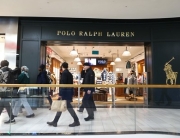The virus was confirmed to have reached France on 24 January 2020, when the first COVID-19 case in both Europe and France was identified in Bordeaux. The first five confirmed cases were all individuals who had recently arrived from China. A Chinese tourist who was admitted to hospital in Paris on 28 January died on 14 February, making it the first COVID-19 death in France.
On 12 March, French President Emmanuel Macron announced on public television that all schools and all universities would close from Monday 16 March until further notice. The next day, Prime Minister Édouard Philippe banned gatherings of more than 100 people, not including public transport. The following day, the prime minister ordered the closure of all non-essential public places, including restaurants, cafés, cinemas and nightclubs, effective from that midnight.As of 17 September 2020, France has reported 415,418 confirmed cases, 31,095 deaths, and 91,305 recoveries after hospitalization.According to a team of French epidemiologists, under 5% of the total population of France, or around 2.8 million people, may have been infected with COVID-19. This was believed to have been nearly twice as high in the Ile-de-France and Alsace.
President Macron announced on 12 March that companies could postpone the payment of social security contributions and taxes due in March without justification, formalities, or penalties. An “exceptional and massive” mechanism of state-funded furloughing (partial lay-offs) was envisaged. Employees were encouraged to practise teleworking where possible. During the second half of March, 4 million French workers applied for temporary unemployment benefits. As at April 2020, approximately 8.6 million employees in France were furloughed. The total cost of the operation for the three months from March amounts to €24 billion.
The French state, which has hitherto borne 100% of the costs of furloughing, reduced the indemnity to 85% from 1 June 2020, with businesses footing 15% of the bill; employees will receive 70% of their gross pay, or around 84% of their net salary. Employees in sectors of activity related to restaurants, culture and tourism, which remain subject to forced closure, continue to receive 100% state indemnity.
Strategic stocks of masks in 2009 under Roselyne Bachelot, minister of health from May 2007 to November 2010, amounted to 1 billion surgical masks and 600 million FFP2 masks . According to the French government, a change of doctrine had occurred upon recommendations from the General Health Directorate in July 2011, the decision was taken then to allow depletion of strategic stocks on the grounds of cost of maintaining the stockpile – including arbitrating the cost of obsolescence. Stock of surgical masks and FFP2 masks in late 2019 had dropped to 140 million and zero units respectively.
Then-health minister Agnès Buzyn declared on 26 January that there would be no shortage of masks in France during the outbreak. Later on 26 February, Jérôme Salomon, the French Directeur général de la Santé, declared during a debate by the French Senate that “A mask shortage is not a subject”. However, health professionals complained that they were ill-equipped to face the crisis, due to inadequate stocks of protective equipment. On 3 March, with France still facing a shortage, President Macron commandeered all masks produced and stored in the country for distribution to health professionals and people who had contracted the virus.
France was subsequently accused of seizing medical equipment intended for other nations. On 5 March 2020, French authorities confiscated four million masks from the Swedish health care company Mölnlycke, which were in a distribution centre in Lyon and destined for Spain and Italy. Two weeks later, after pressure from the Swedish government, France released the masks, allowing two million of them through, with the rest remaining in France either to be used there or for re-export. Mölnlycke estimated that a total of “six million masks were seized by the French. All had been contracted for, including a million masks each for France, Italy and Spain.On 8 May 2020, the government announced that 200 million masks per week would be available starting on 11 May: 100 million for medical workers and 100 million for the general public.







Add Comment